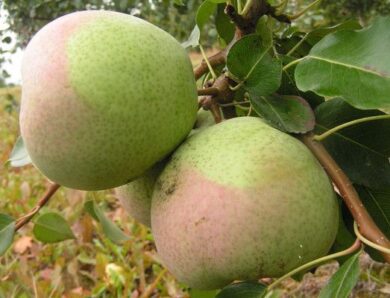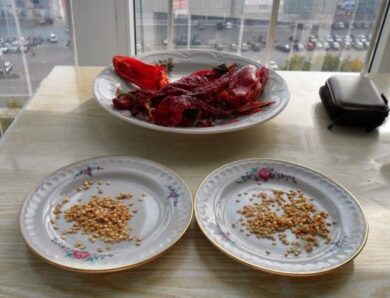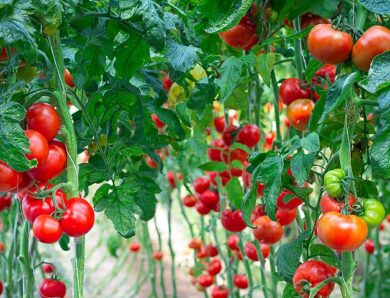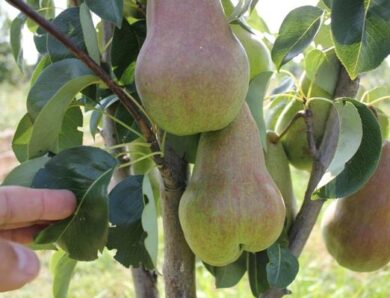How to feed watermelons in the open ground: fertilizer review
Who at least once tried to grow watermelons, knows, how time consuming this process can be. Soil moisture control, destruction of pests, timely feeding of melons and watermelons - these are the basic rules of care for watermelons. The climate of not every region is suitable for growing melons and watermelons in the open ground. Example, the southern regions of Russia and Ukraine are considered ideal for growing melons. In other areas it is possible to cultivate watermelons and melons in a greenhouse. To harvest an excellent crop, farmers feed the fields with organic and mineral fertilizers. Let's look at the question in more detail, when and what to feed watermelons.
How to understand, that watermelons lack minerals
Watermelons and melons are annual plants, who love light, moisture and heat. What shall I do, if the weather and climatic conditions of the region are not suitable for growing melons? This issue has long been resolved in agriculture through the cultivation of melons and watermelons in greenhouses.
The following conditions are required for this: good lighting system, air humidity 60-70%, the ideal temperature during the day is considered 25-30 degrees, and at night - 17 degrees above zero. Sowing and planting of seedlings are carried out in fertile drainage land. The depth of the root layer is not less 30 cm. How to properly care for watermelons, growing in greenhouses? According to the recommendations of experienced farmers, will require protection of seeds and seedlings of watermelons and melons from possible frosts in the spring, timely pinching of crops for growth and formation of the bush, correct watering, maintaining the temperature and the required level of humidity, as well as the correct application of fertilizers. Scheduled feeding for watermelons and melons is carried out 2 times during the period of sowing and fruit ripening.
Lack of a useful substance can be observed in the external condition of the plant:
- phosphorus. Weakened roots, sluggish-looking dirty green leaves, small ovaries of the fruit, main leaves (located at the base of the shoot) deep yellow color with brown spots, gradually increase in size;
- potassium. Rapid withering, yellowing of leaves and signs of sunburn, improperly formed and enlarged at the ends of the fruit;
- calcium. Twisting young leaves in melon and watermelon, infertility of flowers, the ovary is poorly formed, small and tasteless fruits, which are often called "herbaceous";
- magnesium. Yellowness of adult leaves, formation of brown burns;
- manganese. Pale green hue of the leaf surface, yellowing can often be observed;
- iron. It appears on a young leaf in the form of pale green chlorosis.
Want to have a good harvest of melons? Pay attention to the state of garden crops. Signs of lack of various useful microelements and top-dressing of water-melons with melons are timely revealed - a guarantee of a good harvest. Remember, that watermelons should be carefully watered beforehand, and only after that, as the water is completely absorbed into the soil, you can fertilize plants. Otherwise, there is a high probability of provoking burns to plant roots.
Mineral fertilizers
Mineral fertilizers are considered to be the key components of melon nutrition, also known as mineral salts.
There are two types:
- one-sided or simple;
- multilateral or complex.
Complex fertilizers for watermelons and melons include several nutrients. One-sided (simple) top dressing - one type of useful substance. Example, nitrogen, phosphorus, potassium and others. Feed melons better than the root method. According to the recommendations of professional farmers, at each feeding should be diluted in 10 l of clean water 25-30 g of potassium chloride, 10-15 g of ammonium nitrate (urea or urea) and 40-50 g of superphosphate.
Yeast is used for that, to accelerate the growth and improve the condition of the watermelon.
organic fertilizers
Organic fertilizers are widely used in agriculture, which are of plant and animal origin.
The most popular fertilizers are:
- humus. Substrate, formed as a result of the dispute and the disintegration of animal and plant remains;
- manure (chicken or pigeon droppings, mullein) in a roasted state;
- herbal infusion, to which wood ash is periodically added.
The first two types of organic fertilizers (manure and manure) should be diluted with water in proportion 1: 5.
Watermelon feeding scheme
- mid-April. Sowing seeds: humus and soil in the ratio 3: 1, on 1 Art. l. potassium and nitrogen, 3 Art. l. phosphorus;
- seedling germination. 2 mineral fertilizers (after formation 2-3 leaves and through 7 days after the first feeding);
- mid-May. After planting seedlings - organic fertilizers;
- across 9-11 days. Nitrogen fertilizer (4 g of ammonium nitrate on 2 l of warm water);
- withstanding one- two-week break. 2 top dressing (humus, mullein, herbal infusion, chicken manure with the addition of wood ash).
Video "Feeding watermelons"
You will learn from this video, how to properly fertilize watermelons.




